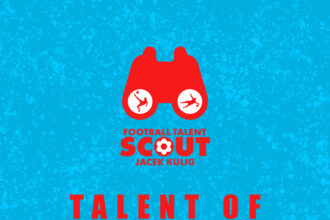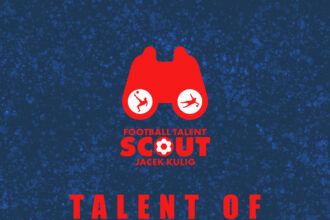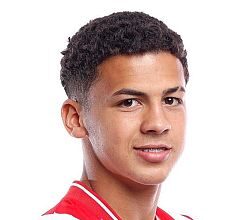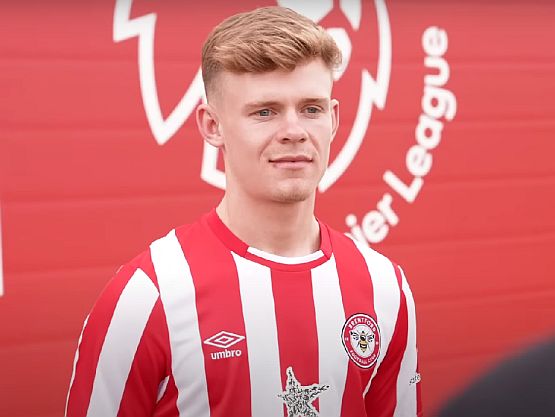Keane Lewis-Potter – Brentford’s third trilogy piece by Raphael Adelugba
The three stones on a trilogy ring traditionally represent the past, present and future of a relationship – this can be associated with the project that Brentford F.C. are building within their front three – Bryan Mbeumo, Ivan Toney and Keane Lewis-Potter.
Some would say, the former French youth international Bryan Mbeumo represents the past of Brentford – fresh minded, spontaneous, and erratic at times. Ivan Toney represents the present of the West London club – exploded onto the scene, stability, and moments of magic. Finally, new man Keane Lewis-Potter is expected to be the future of the club – innovative, quick-thinking, and an untapped potential.
As briefly touched on earlier, Brentford have captured the services of Hull City starlet attacker Keane Lewis-Potter, for a fee around €17 million on a six-year deal with an option of a further year – a deal that represents a significant trust and expectation that the 21-year-old will be the centrepiece of the project that is being built in West London.
Lewis-Potter joining Brentford just seems right. It’s the type of move you see in your average Football manager save and it catches your attention when he scores his 15th goal against you. As a bright young player who was seemingly tearing up a league like the Championship, there was serious Premier League interest in KLP with the likes of West Ham and Everton showing major interest as early as the winter window of last season, and that interest grew into the summer. Despite the interest being strong from these clubs and the allure of European football from the former being a major draw, there was something about joining Thomas Frank’s Bees and teaming up and being part of a potential electrifying trio was something that drew Lewis-Potter.
And, as previously stated, the signing of Keane Lewis-Potter allows Brentford to have their own trio up top – an aspect of many successful teams in the past; Liverpool with Roberto Firmino, Sadio Mané and Mohamed Salah, Barcelona with Neymar, Luis Suárez and Lionel Messi, Real Madrid with Gareth Bale, Karim Benzema and Cristiano Ronaldo. Granted, Brentford’s potential front 3 will not be and isn’t as good as the aforementioned names, but the principles are.
In this article, we will look at a couple of talking points we have about this move and the player himself and the potential challenges he will face stepping up into the top division.
– What he brings to Brentford?
– How big is the step up from the Championship?
– Is he the next Jarrod Bowen?
What he brings to Brentford?
Keane Lewis-Potter is the epitome of the modern winger – ball-striking, dribbling and off the ball movement. All these facets make him such an eye-catching and desirable player to the spectator.
Ball-striking
The primary aspect of Lewis-Potter’s game that makes him such an alluring talent is his ability to strike the ball virtually anywhere around the box and perplex the goalkeeper as the ball bounces right in front of them. Since becoming a first-team player at Hull City, he’s averaged 0.34 goals per 90 minutes domestically, a number that puts him amongst the best in Brentford’s attacking ranks behind Ivan Toney. The last two seasons has seen his numbers propel, scoring 13 goals in the 20/21 season and 12 in the following season.

His shotmap emphasises the efficiency of his shooting, particularly in the box. It also highlights that he is clever in combining his movement and pace off the ball, and is capable of getting on the end of passes and finishing from close range.
Playing for a side like Hull City, who meandered above the relegation positions throughout the season, just gives Lewis-Potter more credit in getting off the shots he did per game.
Though his goalscoring capability goes further than his movement. Lewis-Potter utilises his dribbling skill to produce shots – and goals – for himself. He’ll usually receive the ball in space or out wide and construct a snappy, sharp carry to cut into space and shoot.
Here’s an example, at 05:23 in the video below, where he receives the ball in space on the left, and uses the underlap to disguise the defender as he cuts inside, and whips a shot into the far corner.
Dribbling
Lewis-Potter is dangerous inside the box, but is equally as threatening outside of it. He gives off a certain aura of confidence when the ball arrives at his feet. In an interview with Hull’s website from March 2021, he talked about the exhilaration of taking on players in one-on-one positions.
“Every chance I get the ball, I try to get it out of my feet and dribble at defenders,” he said. “Whether that’s to dribble and set someone up, or dribble and have a shot myself. It’s one of my main attributes and I like to do it as much as I can. I enjoy running at defenders with the ball and trying to make them commit fouls or create an opportunity.”

In this photo, Lewis-Potter stands up his opposition man on the touchline, and with the ability to go inside or out, this leaves the defender static in his defending position, giving him a disadvantage.

This defending position is exploited by Lewis-Potter and he puts the ball through his legs before the defender can adjust…

… he uses his acceleration to receive the ball on the other end of the defender and he’s in through on goal.
Brentford won’t only be acquiring someone who can score goals, but also someone who can lay the foundation of numerous more goals by bringing attacks from the opponent’s half deep into zones close to the opponent’s goal.
Off the ball movement
With all the technical and physical skills that Keane Lewis-Potter has; from dribbling and ball-striking to pace and acceleration, his overall match IQ tends to go under the radar.
Lewis-Potter is your ideal two-way winger on the offensive end – with the ability to come short and collect the ball or make a run beyond the opposition line. Someone with the status like KLP, leads to opposition men being quickly alerted to his danger on the ball, this type of attraction means Lewis-Potter needs to be able mix-up his game and having adept movement off the ball allows him to do that.
It’s something that Brentford has in Bryan Mbeumo, but apart from the Frenchmen, there’s little movement happening in front of the ball-axis that is Ivan Toney. Lewis-Potter will likely have a role of providing a direct outlet similar to Mbeumo and tasks with linking up successfully with Toney – a mechanism to pry open defences.

In this photo, there is a lofted long ball played over the top of Nottingham Forest and as you can see Lewis-Potter is looking to make a blind-side run behind right-back Djed Spence…

….He’s quick enough to reach the pass and get into the box and through on goal…

…Spence can’t make any major contact to stop Lewis-Potter, and the Hull City forward is through on goal and able to get a close range shot away.
All in all, Lewis-Potter is a multi-faceted, well-rounded forward who helps his side in many ways, from tactical versatility to contributing on the offensive end.
How big is the step up from the Championship?
So now we know the type of player Keane Lewis-Potter is, the big question is, how quickly can he adapt to life in the Premier League?
The adaptation within England’s top two divisions has been hiit and miss. Some have taken the step up like a ‘duck to water’ like Jarrod Bowen, Ivan Toney and Jack Grealish all fitting in this category. On the other hand, there’s players who find the level up in quality a little bit too much. Players like Saïd Benrahma, Harry Wilson and Todd Cantwell have all struggled to stake a claim in the Premier League and their general quality has been up for question.
So it begs the question, which category will Lewis-Potter fail into ? In all honesty, he won’t fall into either, yet. The Hull-born forward has shown that he is evidently too good for the Championship especially the level he was playing at with Hull and a move to a lower mid-table club in Brentford more than likely fits his current ability, but unlike the player he used to look up to in Jarrod Bowen, Lewis-Potter doesn’t have the efficiency and sheer ruthlessness as a forward that the former has, and in a era where numbers and statistics are at the centre of a conversation.
A weakness within his game that still needs major improvement is the limited off the ball work-rate he provides. Like Jack Grealish at Aston Villa or Callum O’Hare at Coventry, Keane Lewis-Potter was afforded the onus to be less of a defensive presence when Hull were out of possession and it was understandable considering the massive counter attacking threat he poses on the other end. But his lackadaisical approach off the ball, often left Hull’s left side vulnerable and would see plenty of opposition attacks target the numerical advantage on that side.
For Brentofrd, Thomas Frank will be looking for an instant up in the intensity levels from Lewis-Potter, if he’s too slotted into the West London side, he will have to improve his defensive contribution because wing overloads in the Premier League haven’t been more prevalent than today.
Lewis-Potter will have to perform and most importantly will have to be efficient if he continues earning the plaudits for his immense development.
Is he the next Jarrod Bowen?
As expected, comparisons have been made between Keane Lewis-Potter and Jarrod Bowen and the similarities in development and status growth. But both are very different players profile-wise; as we know Keane Lewis-Potter has shown the skills and tendeciences of a winger who is more proficient in build-up and aids progression, while Jarrod Bowen is the embodiment of the modern day wide forward – looking to cut inside on his strong foot and have a massive impact inside the opposition box – both players can perform each other roles but not to the level of the other.

Jarrod Bowen’s last season in the Championship finished with 16 goals and 6 assists in 29 appearances, compared to Lewis-Potter’s 12 goals and 3 assists but the numbers weren’t where the disparity was, it was in the quality of performances. Both player were Hull City go-to-man and frequent match-winners but it was evident that in Jarrod Bowen Hull had a player who was more than ready for the step up in the Premier League with his game IQ and final third quality highlighting his ability compared to his peers, showing a level or two above majority of the time. Whereas, Keane Lewis-Potter still has shown to have rawness within his game that would see him struggle to adapt to the consistency that is needed in the Premier League.
Despite the similarities in the development path and background, Bowen and Lewis-Potter are different players who are at different levels of their career, so to compare them will only be doing a disservice to both players respectively.
Conclusion
Brentford’s second season in the league will be heavily focused on stability and aiming to continue defying the odds – keeping Ivan Toney and the other promising players who have gained interest in the past year is key to that, and adding young talents in Keane Lewis-Potter, Aaron Hickey and Mikkel Damsgaard keeps the club policy intact and signal long term ambition.
And with long term aims, patience is required and the signing of Keane Lewis-Potter is one that needs the patience to thrive. At Hull we saw a Lewis-Potter who was the spearhead of his team’s attack, often having to create many attacks himself. At Brentford, the expectation is that he is able to perform in the specific role he’s given that takes a good attack to a great attack.
We will still see the memerzing dribbling from the wing and odd pot shot from 20, 30 yards, but the pressure will be on him to improve on his weakness and show consistency in his strengths.
Brentford are building something special and under Thomas Frank’s tutelage they’ve endured the past, present and are about to enter the future, and Keane Lewis-Potter represents a very exciting future.







